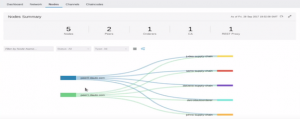
There is something to be said about followership. It is often called the “other side of leadership”. Afterall, there are no leaders without followers.
Yet, leaders get the spotlight. They are revered, aspired to, and respected. They are paid more, get more perks, and have the power. We raise our children to be leaders and encourage leadership experience on college essays. Never have I looked at my own children and said, “Go be a great follower.”
This is largely because of the connotation of follower – passive, weak, insignificant, and lacking ambition.
However, we all know well that great followers get results. They lift the team and the leader so that products are sold, service is provided, lives are saved, and missions are accomplished. Great followers make leaders great. Though, that is a fact that is not always recognized.
My biggest gripe working for a past employer was their robust bonus program for managers. I was not in a leadership role then, but my work enabled and, in some cases, resulted in my bosses receiving beefy incentives based on percentages of their salary. Did I see any of that? Nope. I received the same small bonus the organization gave to non-managers, regardless of salary, role, or results. A smaller, one-size fits all award.
There is a connection between propping up leaders while simultaneously stepping on their followers. We see that connection in employee engagement, which generally refers to level of commitment and connection an employee feels toward their job or organization. Ample research shows the higher employee engagement, the better the organization performs.
The Gallup Organization continues to find low employee engagement in the US. Consistently, really low. Engagement percentages have ranged from 26%-36% for 20 years. (Gallup.com Oct. 2020)
Does our admiration of leadership and lack of focus on followership have something to do with this?
I think so.
What if organizations and leaders flipped their focus to recognizing great followers? Instead of talking about leadership competencies, we talk about followership competencies. Regardless of our role in the organization, we are all following someone. Supervisors follow Managers and Directors who follow Vice-Presidents, who follow a CEO. Even the Chief Executive Officer follows a Board of Directors.
For organizations and teams to excel, there simply needs to be an equal focus on both leadership and followership. This week we focus on the latter by exploring follower types, “leadership bias”, and how to embrace it.
Follower Types
Think back to the various jobs you have had. What kind of follower were you? Were you competent, consistent, and challenged leadership productively? Were you passive or maybe preferred to fly under the radar? Did you put on a good face at work but at happy hour shared snarky comments about management? A combination of all of these depending on the job and the boss? Me too.
To no surprise, the research on followership is lean. Followers just don’t get the attention. However, Robert Kelley’s Followership Model is sound. It was published in the late 80’s but is still considered one of the most well-known. He defines followers as landing on two spectrums: Dependent to independent critical thinking, and passive to active behavior.
- Alienated Followers: While these folks are critical, independent thinkers, they do not take the initiative to act. They are often cynical and demonstrate disgruntled acceptance. They can drag down the team.
- Sheep: Passive behavior and dependent thinking results in an employee who performs tasks and stops. This person has low engagement for the work and can’t figure things out for themselves.
- Yes People: Livelier than sheep due to being more active in behavior, they are not particularly creative. Some leaders love to have Yes People around them. They get the work done and don’t question.
- Survivors: These folks will not actively challenge the leader or blindly accept. Rather, they will sit on the fence and then act when it benefits them.
- Effective Followers: Well-balanced, they think for themselves, carry out duties, and respectfully challenge leaders. While they can be a leader’s “right hand” and very helpful, some leaders do not like these followers because they will intelligently question strategy.
We can identify with all these types. Alienated Followers and Sheep are the most unproductive and detrimental to the leader and team. Yes People won’t take the team to the highest level of performance but they are agreeable and get the work done. Survivors can bring value as well. They’re steady but probably won’t help innovate.
Effective Followers (EF) are the ideal. They are resilient to change, they can operate in ambiguity, and are comfortable with conflict. They build relationships across, up, and down the organization and communicate effectively with all. They have positive and supportive attitudes and handle stress productively. They’re not perfect, however. They are human and make occasional mistakes, even overstep their bounds. But, they are open to feedback and adjust accordingly. This is because “they are committed to the organization and to a purpose, principle, or person outside themselves.” (Kelley, HBR 1988)
There are a number of contributing factors that create the type of follower on a team. Ability, job fit, how the leader interacts with followers, and how the entire team interacts with each other. Organizational structure and culture also play a part.
Bias for Leadership
What do we do with someone who exhibits the Effective Follower attributes? Make them a leader! We say, “you have leadership potential!” and then enter them into a leadership development program or promote them straight into a management role. This bias for leadership results in two problems for organizations:
- The wrong people are promoted into leadership. Being a successful individual contributor requires a different skill set than a leader responsible for getting results through others. This means the leaders in the organization are often ill-equipped to lead.
- The organization is structured vertically which means the only career path with clear salary advancement involves having to manage people. For those who do not want to be in management, they’re often stuck.
How much does this bias for leadership contribute to creating Sheep and Alienated Followers? I don’t know. The research is limited. However, it is likely another contributing factor.
Flat organizational structures combat these problems by reducing the number of layers in an organization and nearly eliminating middle management. Career paths and salary advancement are available without having to move into leadership roles. They have their drawbacks too but if there is an organizational structure that is positioned to cultivate followership, it would be a flat one.
For most of us, however, the culture and structure of an organization is out of our control. Focusing on followers, at the individual level, is within reach for us all.
Critical Voices
There is criticism of the “followership” concept. First, some state that there are no followers. Rather, everyone is an equal member of the team working together. I understand the sentiment. Leaders will achieve better results when they treat members as valued partners versus support staff. (Edmondson, 2012)
Yet, if this were truly the case (that everyone, including the boss, is an equal team member), then there would also be no leaders. By using the term leader, having followers is implied.
Also, some have recommended that a different word be used entirely because it is not desirable to be called a follower. Though, Kelley argues that is the point. Normalizing the term follower is to embrace it and thus create acceptance and support for the important role followers play in achieving goals. Use the term and build a positive connotation for it.
Embracing Followership
Embracing followership truly begins with ourselves. Make an honest assessment of yourself. What kind of follower are you? Assign yourself a type and determine what kind of contribution you make to the team. If you can identify ways to improve and be a better follower, how might you dial it up a notch or two?
If you’re not in a leadership position, ask yourself honestly if you even want to be – or if it is the world’s judgement and expectations that make you feel like you should be managing people. Are you happy being a follower? Are you an effective follower? Then own it. Be great and show others how to do it.
If you are in a leadership position, think about how you talk about and model followership for your team. Are you an Effective Follower to your boss and how would your team know that if you are? Share what it means to be a follower and be candid about the benefits and challenges of it.
If, on your team, there are Sheep and Alienated Followers, what support do they need? The Sheep may need to be coached out of the organization. Alienated Followers too, or they may need to build confidence or feel more support.
This is a call-out to recognize great followership in and of itself. This is a challenge to organizations and leaders to acknowledge that achieving a mission and delivering results doesn’t happen through leadership alone.
There is a huge opportunity in many organizations to adjust the volume of attention on leadership to followership. To focus on what it means for everyone in the organization to follow each other effectively and then create systems and rewards to support it. Everyone must feel the benefits to being a great follower. Without the incentives, recognition and support, disengagement and poor performance will continue to follow.
This article was originally published on the Growth Partners Consulting blog.
Business & Finance Articles on Business 2 Community
(52)
Report Post








